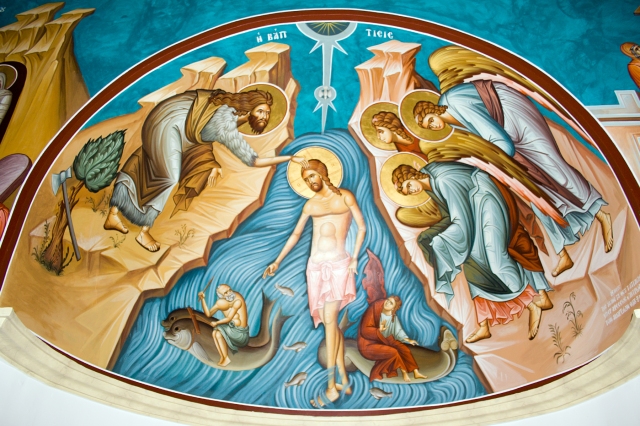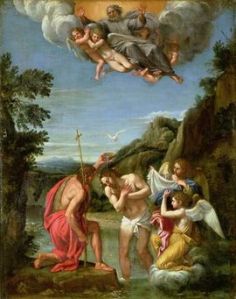
Yokes have become more like decor than vital equipment in industrialized cultures. Yet Jesus’ metaphor of taking on a yoke remains helpful for spiritual practice today.
Reprinted with permission from Darkwood Brew
Something that never ceases to amaze me is the way that scientific findings continue to converge with spiritual wisdom these days. They’re like two streams that keep flowing in and out of one another in a river delta. The more the volume of understanding increases in one stream, the more new insights flow back and forth between the two channels.
Take this week’s topic, “The Yoke of God.” Naturally our first inclination is to focus upon the section about taking on the “yoke” portion. The yoke has become an almost-lost metaphor for industrialized cultures. We’re out of touch with yokes, with how they’re made and what they do. In Jesus’ time, as in most developing countries today, a yoke forms a vital piece of equipment because it transforms a pair of carriers – be they oxen, cattle or human shoulders – into a single force for hauling loads.
As a spiritual director, I see Jesus’ words as an invitation to do two things: to make relationship with God the focus of one’s life, and then to practice those spiritual disciplines that maintain a focus on the divine. By “yoking” ourselves with Jesus, we tap into the wisdom of his spiritual teachings that offer practices for bearing the burdens of life.
Sounds simple enough, right? Yet we spiritual directors are taught, and we teach others, that spiritual discipline requires letting go of one’s ego, forsaking the thoughts and actions that put self before Self. Years ago, I heard a prominent African American United Methodist pastor, the Rev. Kirbyjon Caldwell of Houston, define ego as “edging God out.” Personally, after 40 years in the hard-driving profession of journalism, I’ve decided that ego creeps into a sense that one is indispensable – the idea that if one takes time off to rest and recuperate, the world will fall apart. This sense of indispensability often manifests as “busy-ness” or, in today’s parlance, multi-tasking.
Multi-tasking has been a buzzword in business and technology circles for decades. Workers are urged to increase their productivity, to accomplish as many things as possible during their shifts. People who are “goal-oriented” are held up as role models. While giving a fair day’s work and completing assigned tasks are worthy pursuits, within the contemporary predilection for multi-tasking lurks the demon of indispensability. Therein lies the rub – that is, the place where the “yoke” doesn’t fit properly, to use our scriptural metaphor.
Recently a publisher’s note came to my email box (I’m a devoted bibliophile) about a 2009 book on the topic of multi-tasking: Your Brain at Work by David Rock (Harper Business). The email contained this excerpt from pages 35 and 36, which I’ve abridged:
“The idea that conscious processes need to be done one at a time has been studied in hundreds of experiments since the 1980s. … A study done at the University of London found that constant emailing and text-messaging reduces mental capability by an average of ten points on an IQ test. … ‘Always on’ may not be the most productive way to work. … The wear and tear from this has an impact. As [another scientist] says, ‘This always on, anywhere, anytime, anyplace era has created an artificial sense of constant crisis. What happens to mammals in a state of constant crisis is the adrenalized fight-or-flight mechanism kicks in. It’s great when tigers are chasing us. How many of those five hundred emails a day is a tiger?’ “
That’s where the “yoke” rubs these days, even in churches, synagogues, temples and mosques. We fill our calendars with so many programs and activities that we forget why we come together in the first place: to experience God in our midst. In order to be attuned to a communal experience of the divine, I believe we also must practice personal attention to God that Jesus described as his own: “humble and gentle in heart.”
With a healthy sense of self, a humble person can more easily let go of the ego that edges God out. Humility offers a great defense against a soul-and-body destroying sense of indispensability and the anxiety that comes from the hyper-alertness of being “always on.” I often wonder if the anxious state of American society these days stems in part from the fact that we’re “always on” our tech toys. That’s not a criticism of others, mind you; I have to be strict with myself about getting off-line on weekends as much as possible.
In the end, reconnecting with an unhurried God may require courage – the courage to let go and the courage to say “no.” Perhaps if strive for these traits in ourselves, we’ll encourage others to “yoke” with us on the journey.
Cynthia B. Astle, OSL, of Dallas, TX, is a certified spiritual director and longtime religion journalist. She blogs at Water-marked.com.






